Dinosaurs are a group of reptiles that “dominated the land for over 140 million years.” Evidence of dinosaurs has been found in every country on Earth. They evolved to become an incredibly diverse group. Some dinosaurs grew to immense sizes – like the 130 ft long and 200,000 lbs Argentinosaurus – while others were as small as turkeys. They had a variety of natural weapons and armor, from sharp claws to spiked tails to bone-plated skin, that helped them to survive and thrive in the dangerous world they lived in.
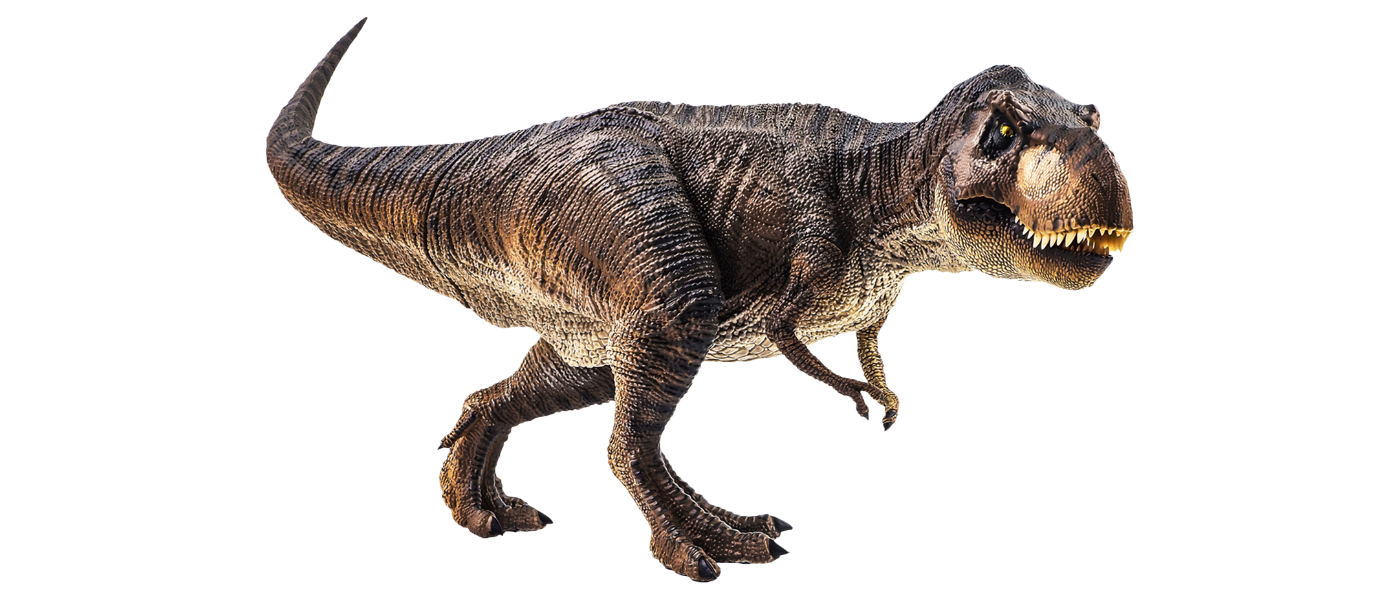
Tyrannosaurs rex
The Tyrannosaurus rex (T-rex) was one of the most fearsome predators to have ever walked the surface of the Earth. With 4-foot-long jaws lined with 40-50 bone-crushing serrated teeth, this prehistoric reptile was a force to be reckoned with.
The T-rex has most definitely earned its name, the “tyrant lizard”, and has starred in many movies; however, there is evidence to show that this terrifying beast was not only a predator but also a scavenger.
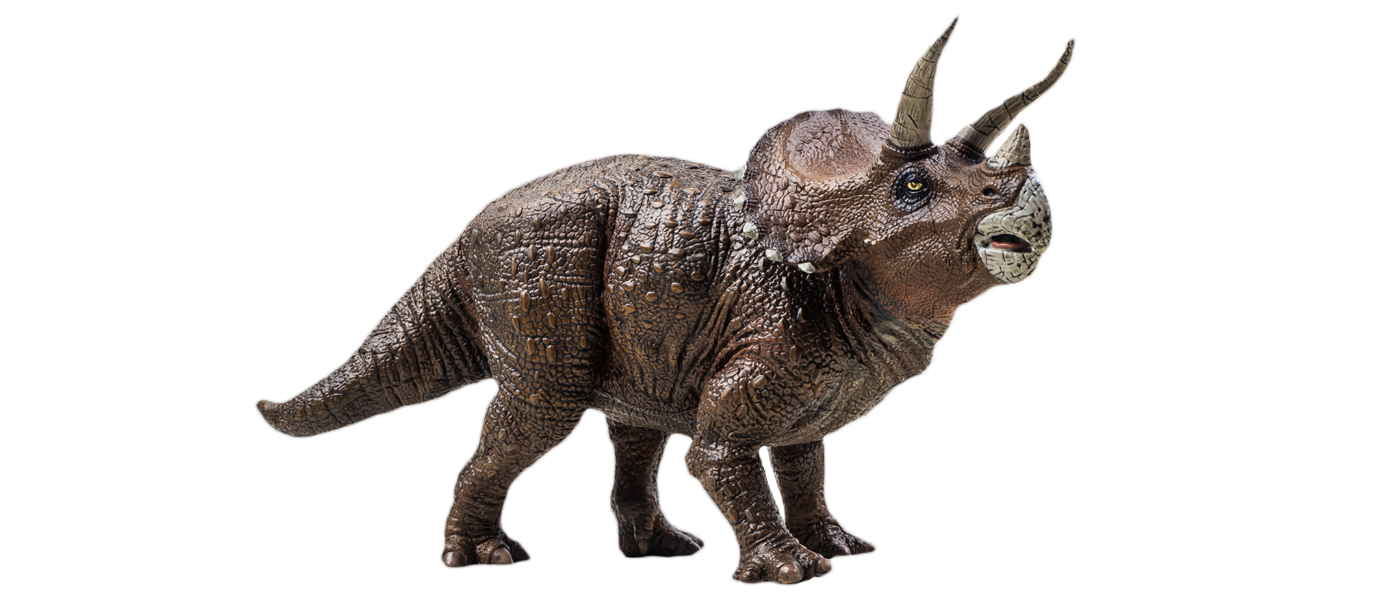
Triceratops
Triceratops was a formidable adversary of the T. rex and used their massive trio of horns for defense and protection.
This dinosaur was a quadrupedal herbivore with a large bird-like beak and shearing teeth used to grind the tough palm fronds that it ate.
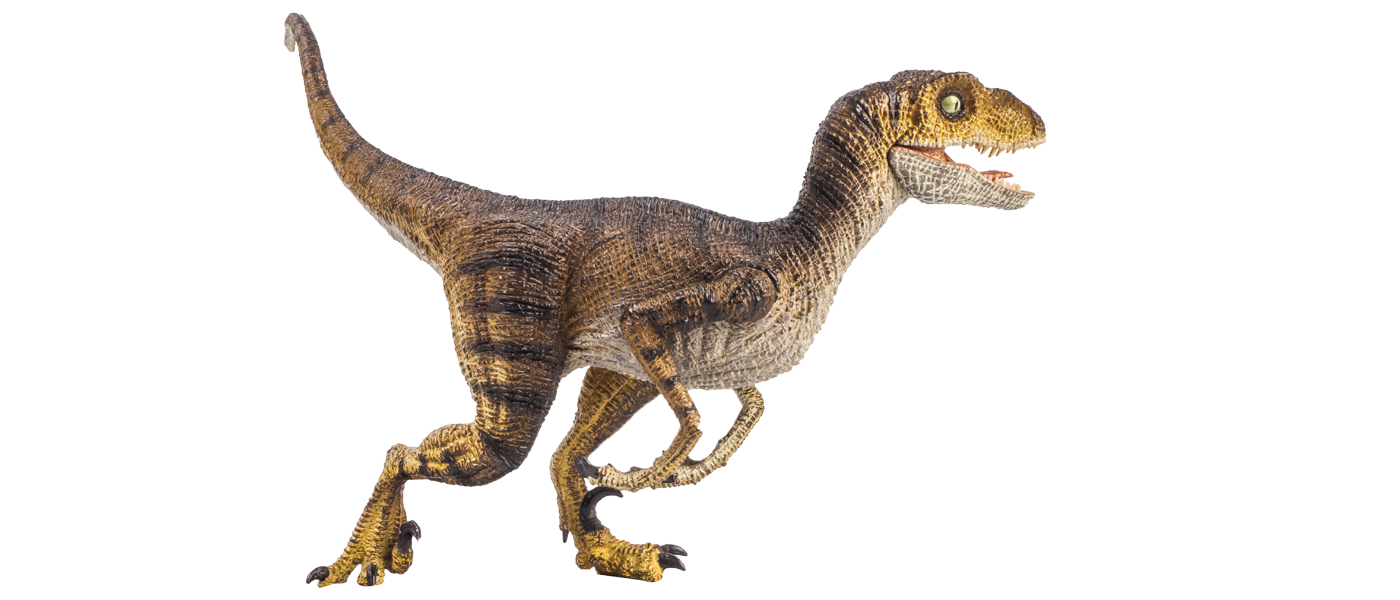
Velociraptor
The velociraptor, or “speedy thief”, has a lot of misconceptions tied to its appearance. In many movies the Velociraptor was shown to be very large. But the velociraptor was actually the size of a turkey or a large chicken! It is even thought to have been covered in feathers rather than scaly reptilian skin.
But don’t let its small stature deceive you. The velociraptor was equipped with large scythe-like talons that it used to take down its prey.
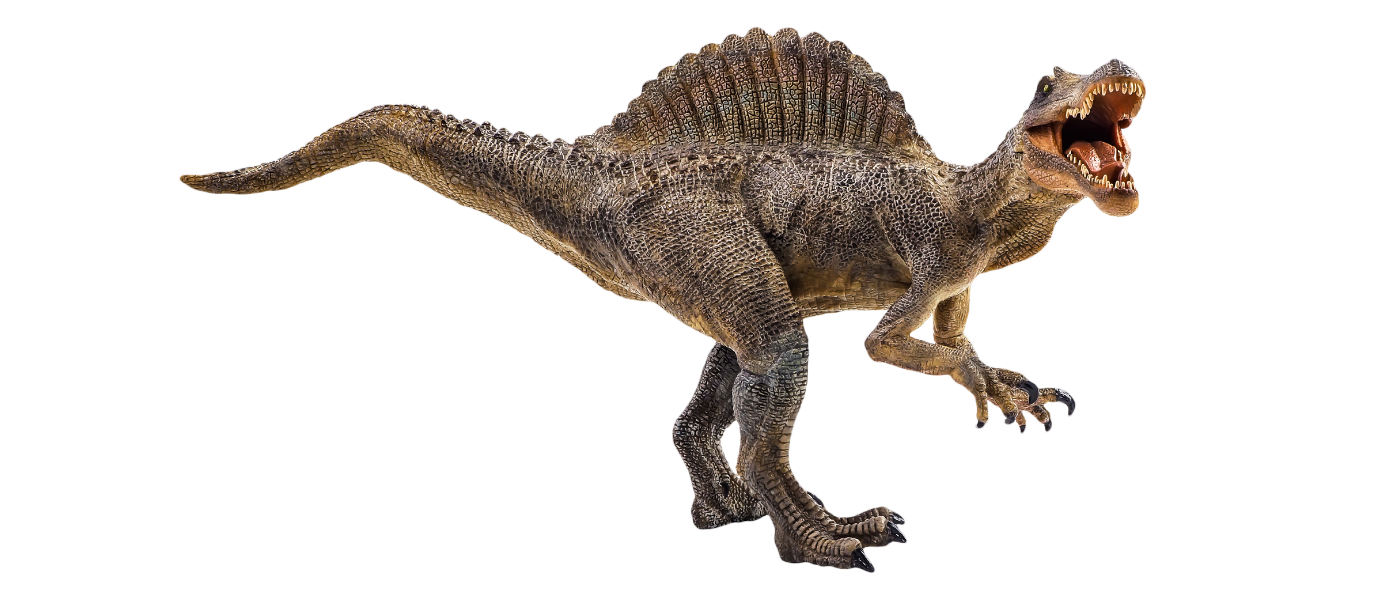
Spinosaurus
Spinosaurus was the largest land carnivore to have ever lived. This dinosaur had a body length of 46-59 feet and weighed approximately 13-22 tons.
These fearsome beasts are thought to have been aquatic predators that waded in the shallows and perhaps even swam underneath the surface in pursuit of its prey. Its 6-foot-long head and long claws were excellent tools for hunting fish, the main portion of its diet.
The spinosaurus also had a large sail on its back that some think was to signal to others what species it was or that it was used to store water and lipids for times when food may have been scarce.
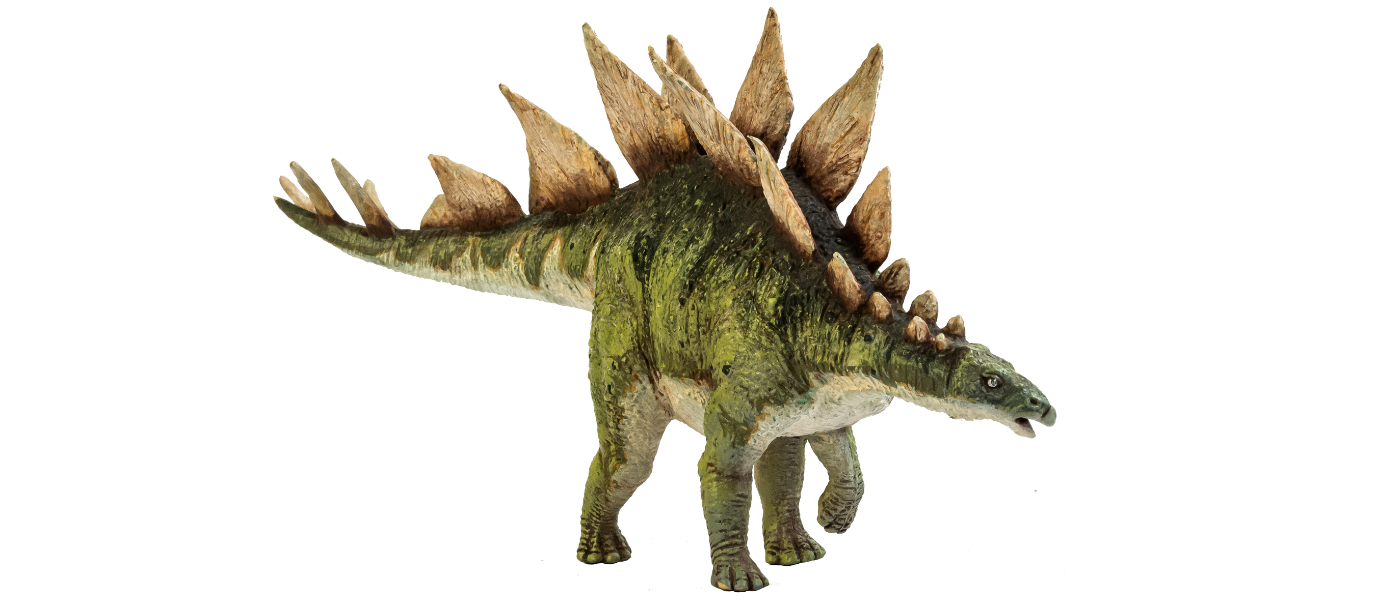
Stegosaurus
The stegosaurus may be the most recognizable dinosaur today with its large plated back and spiked tail. Its hindlegs were longer than its forelegs giving it an arched appearance. Having longer hindlegs may have also given the stegosaurus extra swinging power with its tail due to increased muscle mass near the hips.
Like the triceratops, stegosaurus was a herbivore and ate only plants. The stegosaurus was huge – 21 feet long and about 10 feet tall at the hips. It is also believed that this dinosaur was very slow and lumbered around at 5-10 mph which is slower than a bicycle.
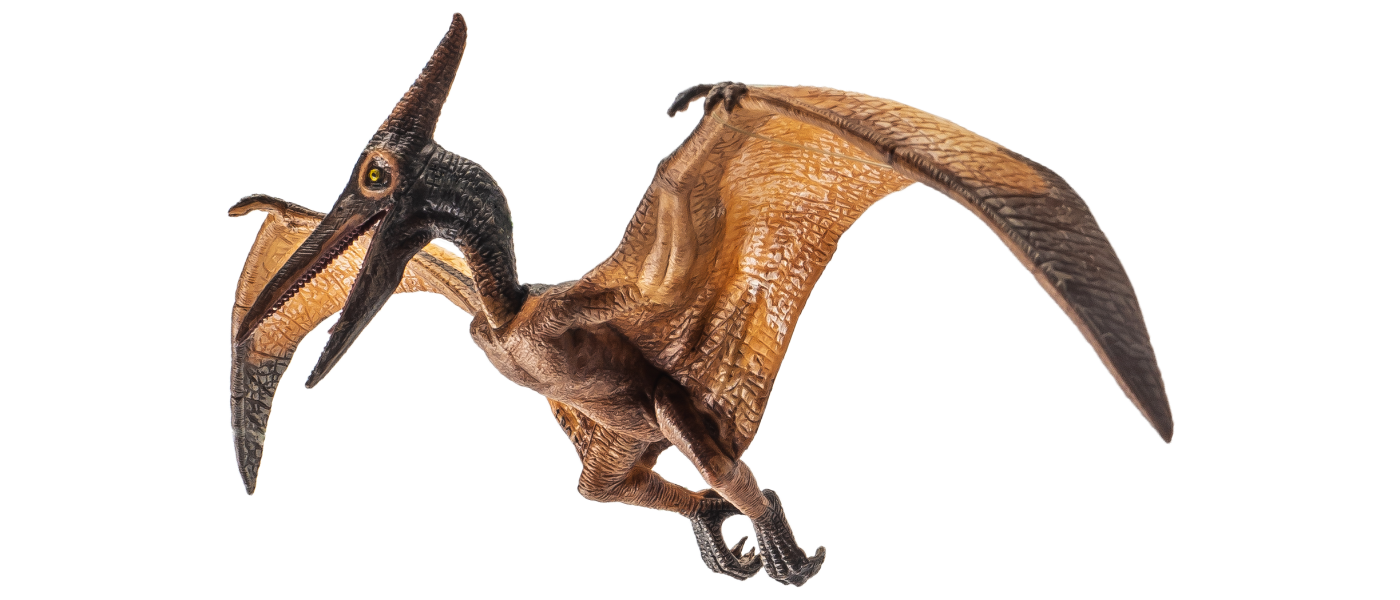
Pteranodon
Although technically a pterosaur and not a dinosaur, pteranodons lived among their dinosaur counterparts in the Cretaceous Period, some 66-145.5 million years ago, and soared across the skies and over the surface of the seas.
These flying reptiles were covered in a fur-like coat; however, this fur was different from mammal fur. Pteranodons had an impressive wingspan of up to 20 feet that was perfect for swooping down to the surface of the water to catch prey. On their heads, pteranodon had a large crest which scientists believe helped to attract mates.
 About the Author: Hunter Vires is an Education Assistant Intern at Wonderlab. Growing up in rural northern Indiana, he spent much of his time watching the stars in the night sky and asking himself many questions about the universe. Now he studies astronomy/astrophysics and biology at IU in order to dive headfirst into the emerging field of astrobiology.
About the Author: Hunter Vires is an Education Assistant Intern at Wonderlab. Growing up in rural northern Indiana, he spent much of his time watching the stars in the night sky and asking himself many questions about the universe. Now he studies astronomy/astrophysics and biology at IU in order to dive headfirst into the emerging field of astrobiology.
Sources:
“Triceratops.” Natural History Museum, https://www.nhm.ac.uk/discover/dino-directory/triceratops.html.
Clyde Peeling’s Reptiland. “Dinosaur Fun Facts: Tyrannosaurus Rex: Reptiland.” Clyde Peeling’s Reptiland, Clyde Peeling’s Reptiland, 23 Dec. 2015, https://reptiland.com/dinosaur-fun-facts-tyrannosaurus-rex/#:~:text=This%20dinosaur’s%20massive%20jaws%20were,to%20swallow%20an%20adult%20human!
Strauss, Bob. “10 Facts about the Velociraptor Dinosaur.” ThoughtCo, ThoughtCo, 26 Sept. 2019, https://www.thoughtco.com/things-to-know-velociraptor-1093806.
“Saurischian.” Encyclopædia Britannica, Encyclopædia Britannica, Inc., https://www.britannica.com/animal/saurischian.
Encyclopædia Britannica, Encyclopædia Britannica, Inc., https://kids.britannica.com/kids/article/Stegosaurus/390092.
“Fun Facts for Kids on Animals, Earth, History and More!” DK Find Out!, https://www.dkfindout.com/us/dinosaurs-and-prehistoric-life/prehistoric-reptiles/pteranodon/.
“Spinosaurus.” Encyclopædia Britannica, Encyclopædia Britannica, Inc., https://www.britannica.com/animal/Spinosaurus.

Leave A Comment